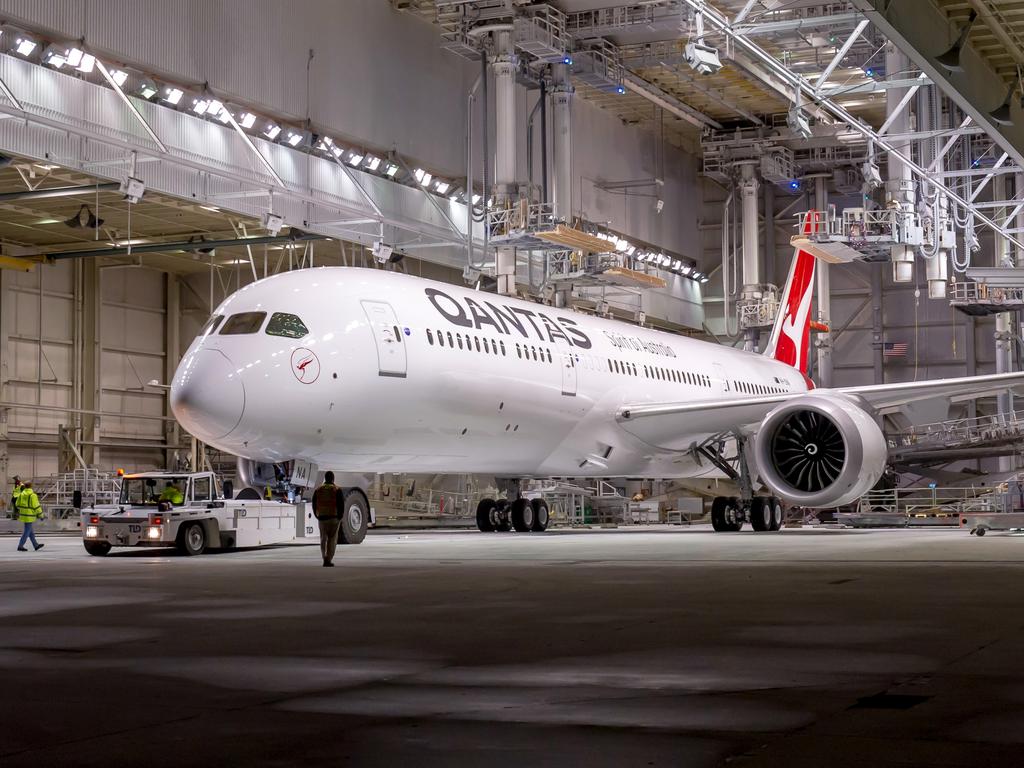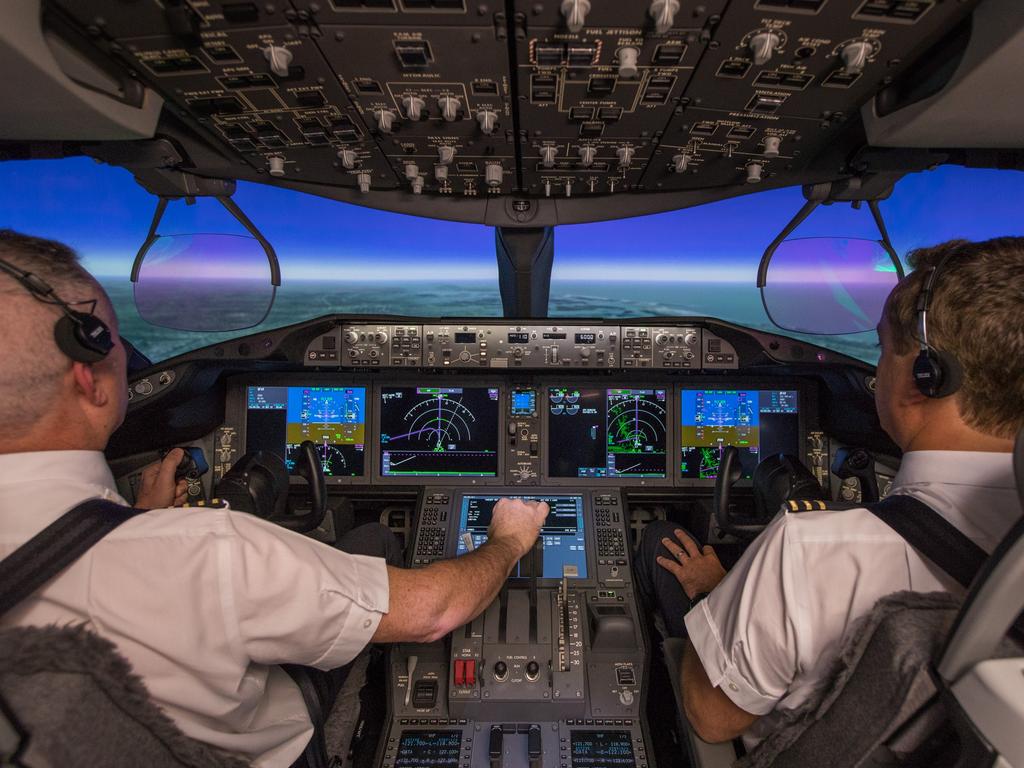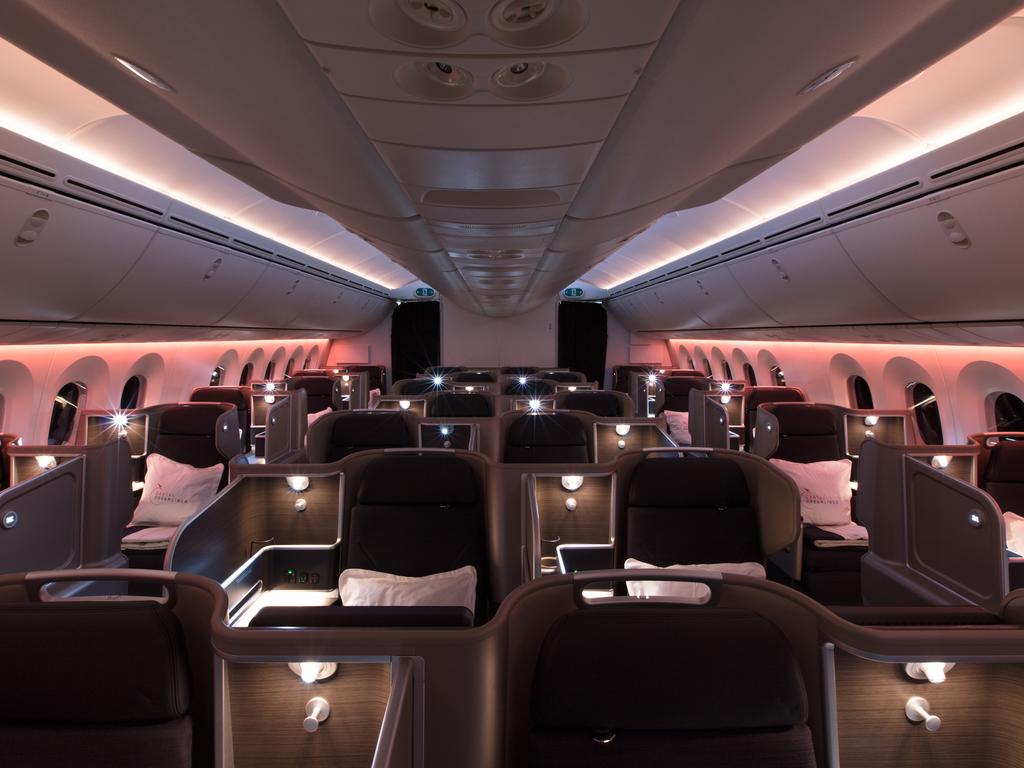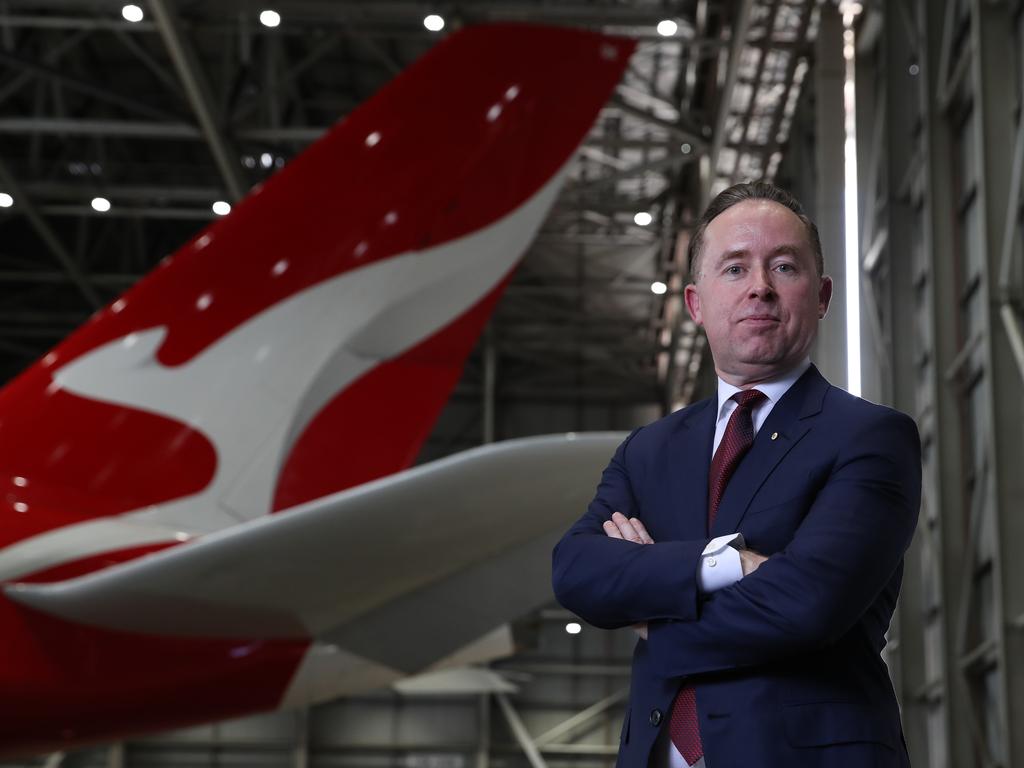Qantas about to pull off an unthinkable flight
This weekend Qantas will send human guinea pigs on a flight no airline has pulled off before — a gruelling journey for the history books.
A group of human test subjects are about to board a Qantas Boeing Dreamliner in New York for a flight no airline has completed before.
Almost 20 gruelling hours later, they’ll land in Sydney, having conquered the longest non-stop commercial flight in history.
It will be tough, but that’s the idea behind this weekend’s test flight — the physical and emotional toll of the ultra-long-haul flight will be recorded as part of Qantas’ bold long-haul project, Project Sunrise.
Qantas is investigating the possibility of enhancing its global flight network with ultra-long-haul journeys that would connect Australia with far-flung destinations such as the UK and New York that have traditionally required stops along the way. The airline made history by launching direct flights from Perth to London last year.
This weekend’s marathon test flight, which is scheduled to take just shy of 20 hours, departs from New York on Saturday morning, our time, and is due to land in Sydney on Sunday morning. No airline has ever completed that journey without stopping.

The brand-new Dreamliner aircraft used on the flight will be a flying laboratory, with scientists and medical researchers monitoring the conditions and impact on the roughly 40 people on-board.
The passengers will act as human guinea pigs, with their food and drink consumption, sleep and activity monitored the whole way. Pilots will wear devices that track brain wave patterns and monitor alertness, which will help establish work and rest schedules for crew on long-haul routes. Even the lighting on-board will be carefully considered by researchers.
But the Australian and International Pilots Association has urged caution ahead of the gruelling test flight — along with two others planned for the coming months — and said safety rules might need to be rewritten in a new era of ultra-long-haul flights.

“Qantas is proposing to fly some of the longest routes in the world, and what we need is a scientific long-term study into the impacts on crew so we can make sure ULR (ultra-long range) flying is as safe as we and the airline can make it,” AIPA safety and technical director Captain Shane Loney said, according to Fairfax.
“Pilots are concerned about being able to get enough quality rest during ULR flights to maintain peak performance.”
His warning on the eve of the test flight comes as an American expert in the body's circadian rhythms said the impacts of jet lag could be “devastating”.
“Jet lag is more than just an inconvenience. It’s pretty devastating physiologically,” Carrie Partch, a biochemist and associate professor at the University of California, told Bloomberg this week.

“If you’re a constant traveller, you’ll probably put on more weight, you’ll probably have cardiovascular challenges, and you may have some behavioural changes.”
Qantas Group CEO Alan Joyce said the test flight would answer “a lot of commonsense questions about the comfort and wellbeing of passengers and crew”.
“For customers, the key will be minimising jet lag and creating an environment where they are looking forward to a restful, enjoyable flight,” Mr Joyce said when the test flight was announced in August.
“For crew, it’s about using scientific research to determine the best opportunities to promote alertness when they are on duty and maximise rest during their downtime on these flights.
“Flying non-stop from the east coast of Australia to London and New York is truly the final frontier in aviation, so we’re determined to do all the groundwork to get this right.

“No airline has done this kind of dedicated research before, and we’ll be using the results to help shape the cabin design, in-flight service and crew roster patterns for Project Sunrise.”
Qantas will attempt two more groundbreaking test flights over the coming months: another from New York and a third from London.
After that, the airline will determine whether or not it presses on with ultra-long-haul flying.
“There is plenty of enthusiasm for Sunrise but I have to say it is not a foregone conclusion,” Mr Joyce said in August.
“This is ultimately a business decision and economics have to stack up. And if they don’t, we won’t do it.”
If Project Sunrise goes ahead, it’s expected to take passengers to the skies on ultra-long-range flights in 2022.




